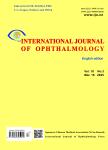Air tamponade and without heavy liquid usage in pars plana vitrectomy for rhegmatogenous retinal detachment repair
Air tamponade and without heavy liquid usage in pars plana vitrectomy for rhegmatogenous retinal detachment repair作者机构:The Eye Hospital School of Ophthalmology and Optometry Wenzhou Medical University Department of Ophthalmology University of the West Indies
出 版 物:《International Journal of Ophthalmology(English edition)》 (国际眼科杂志(英文版))
年 卷 期:2018年第11卷第11期
页 面:1779-1783页
核心收录:
学科分类:1002[医学-临床医学] 100212[医学-眼科学] 10[医学]
主 题:air heavy liquid rhegmatogenous retinal detachment pars plana vitrectomy
摘 要:AIM: To report the results of rhegmatogenous retinal detachment(RRD) repair after pars plana vitrectomy(PPV) without operative use of heavy liquid, and utilizing air tamponade in selected ***: RRD patients without severity of proliferative vitreoretinopathy C2 or more underwent PPV without operative use of heavy liquid, and utilizing air tamponade were consecutively enrolled. Alternative postoperative facedown position or lateral position was required for 3-5 ***: Totally 36 eyes of 36 patients(24 males, 66.7%) aged 53.8±10.9 y underwent this modified surgery. The mean number of retinal break was 2.1±1.3. Most of the eyes(29, 80.6%) had retinal detachment involving more than one quadrant. Twenty-two(61.1%) eyes with cataract had combined phacoemulsification and intraocular lens implantation. The mean follow up time was 4.6±1.8 mo. Two eyes with retinal redetachment underwent a second retinal repair surgery with silicone oil tamponade, yielding the primary reattachment rate to 94.4%(34/36). Six(16.7%) eyes had intraocular pressure higher than 25 mm Hg. The visual acuity(logMAR) improved from 0.98±0.74 preoperatively to 0.52±0.31 postoperatively(P〈0.001). CONCLUSION: The success rate of this modified retinal repair surgery is comparable with traditional surgery. This technique can be considered for certain retinal detachment patients, since its apparent advantages included lower surgical complications, reduced surgery expenditure, shorter time for postoperative facedown position, and avoiding silicone oil removal surgery.




